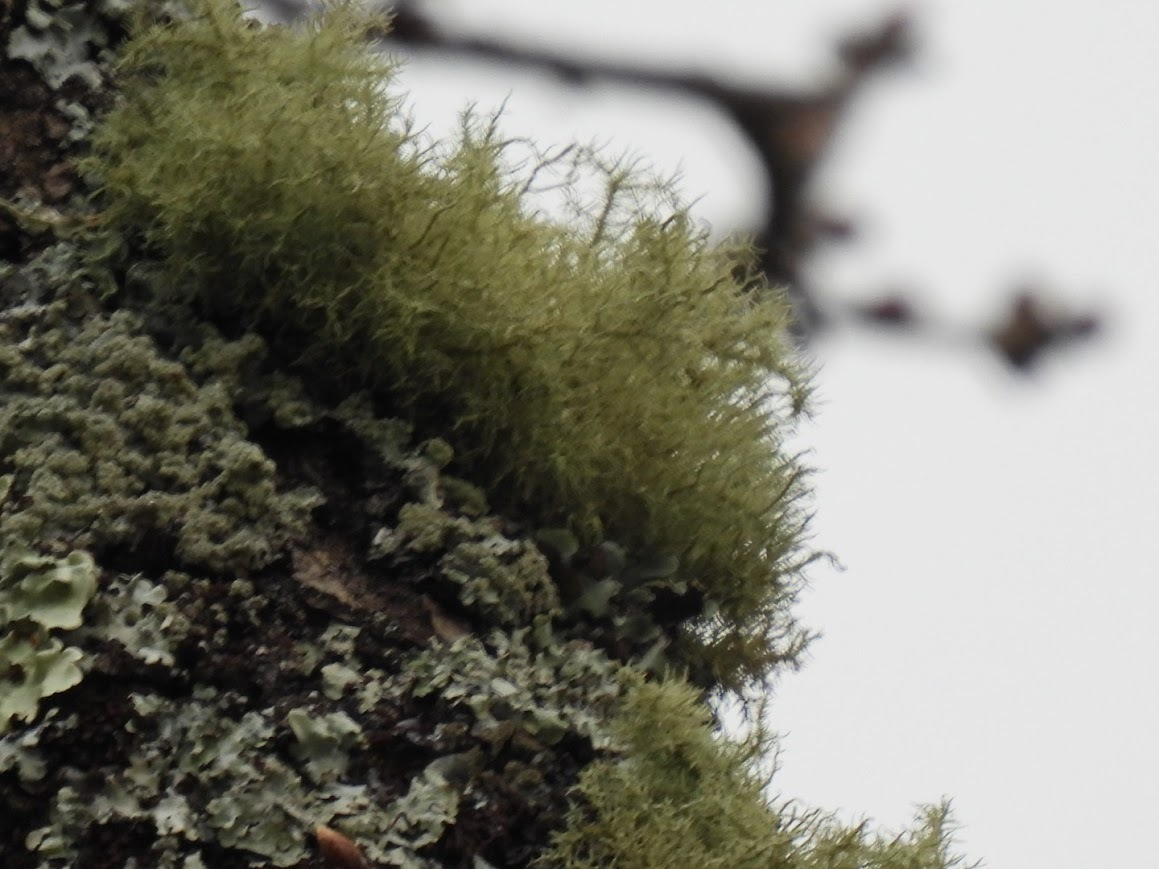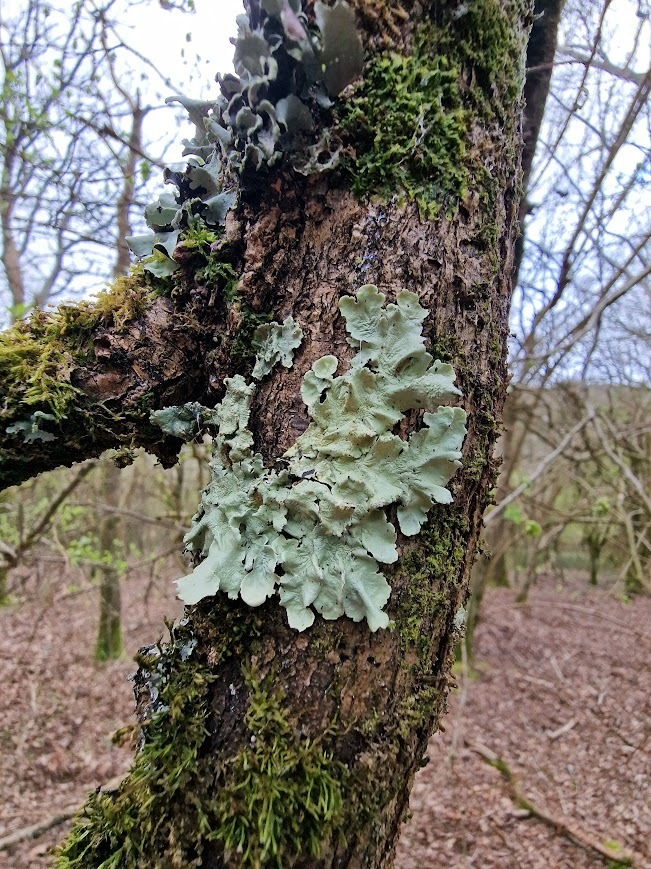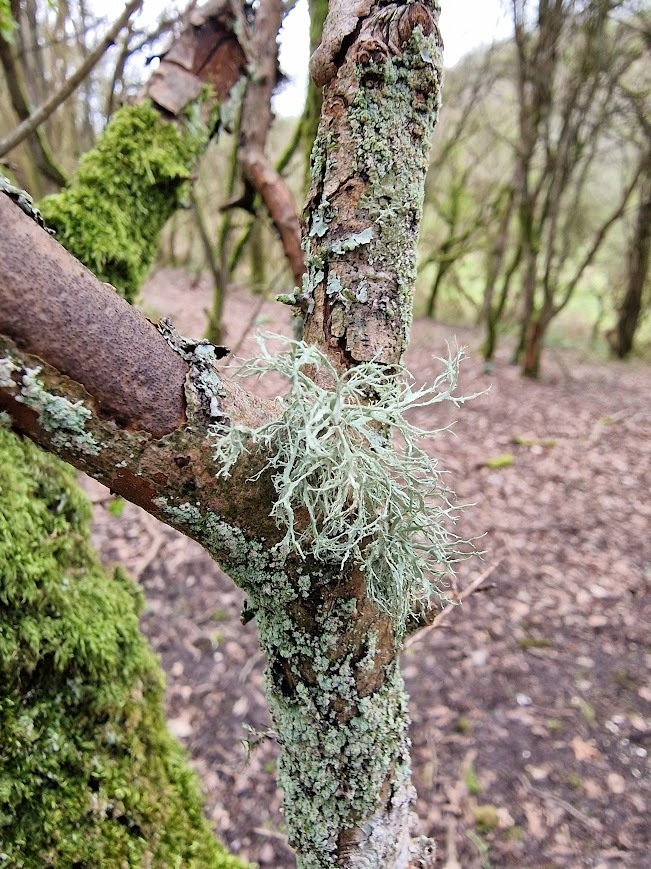Ashcombe Bottom, 4km west of Lewes, is one of the very few ancient woodlands left on the East Sussex Downs. ... the hazel coppice supports a colony dormice - an exclusively arboreal rodent - to which for millennia this wood must have been a kind of ark in an ocean of open fields. Among the hazels grow many spreading oaks, their branches festooned with polypody and harts tongue ferns. Oaks dislike chalk but thrive here because the acid clays deposited on top the chalk have not been dispersed by ploughing or erosion.Owen Johnson (1998) The Sussex Tree Book p.24.
Normandina pulchella Elf Ears Lichen with Fruliana Dilatata, Dilated Scalewort 
Parmotrema perlatum, Black Stone Flower and Fruillana dilatata, Dilated Scalewort. growing on an Oak

An Usnea sp, possibly Usnea cornuta s. l., high up on the branches of the fallen oak above 
Xanthoria parietina Golden Shield Lichen

Probably Lepraria finkii Fluffy Dust Lichen

Flavoparmelia caperata Common Greenshield Lichen; common on may trees in Ashcombe Bottom

Ramalina farinacea Farinose Cartilage Lichen, a very common lichen on Hawthorn and other trees

For a fuller account of all the species I saw at Ashcombe Bottom see: